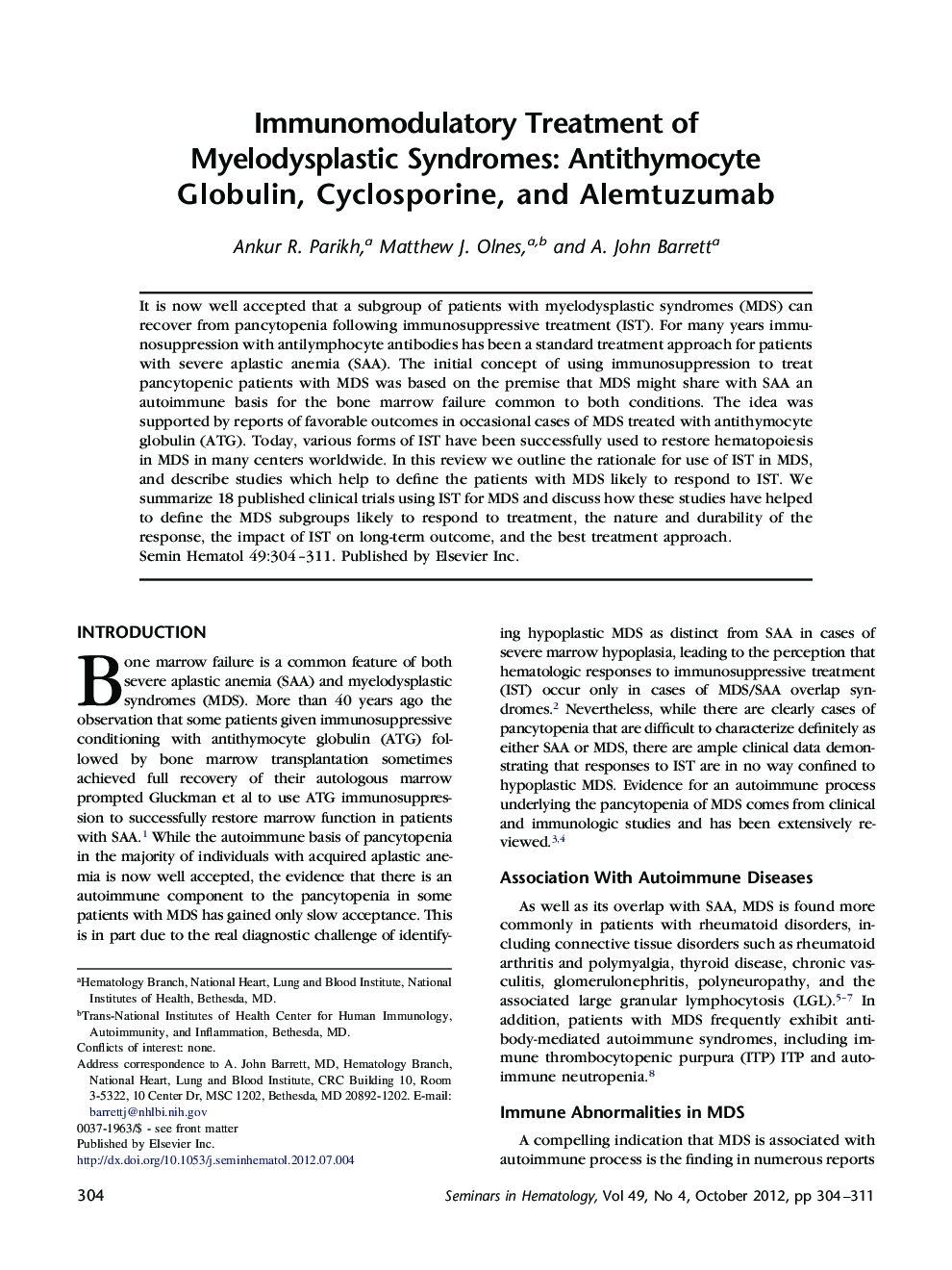| Article ID | Journal | Published Year | Pages | File Type |
|---|---|---|---|---|
| 3333722 | Seminars in Hematology | 2012 | 8 Pages |
It is now well accepted that a subgroup of patients with myelodysplastic syndromes (MDS) can recover from pancytopenia following immunosuppressive treatment (IST). For many years immunosuppression with antilymphocyte antibodies has been a standard treatment approach for patients with severe aplastic anemia (SAA). The initial concept of using immunosuppression to treat pancytopenic patients with MDS was based on the premise that MDS might share with SAA an autoimmune basis for the bone marrow failure common to both conditions. The idea was supported by reports of favorable outcomes in occasional cases of MDS treated with antithymocyte globulin (ATG). Today, various forms of IST have been successfully used to restore hematopoiesis in MDS in many centers worldwide. In this review we outline the rationale for use of IST in MDS, and describe studies which help to define the patients with MDS likely to respond to IST. We summarize 18 published clinical trials using IST for MDS and discuss how these studies have helped to define the MDS subgroups likely to respond to treatment, the nature and durability of the response, the impact of IST on long-term outcome, and the best treatment approach.
